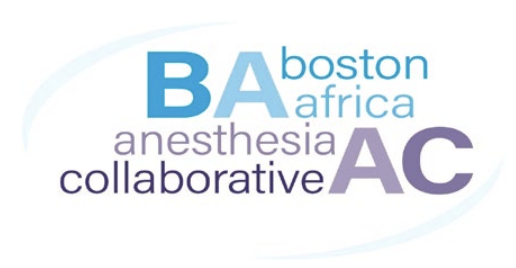Perioperative Cardiovascular Management for Noncardiac Surgery
Ama Taplah, BSN, MPH, RNA, Diana Park, MSN, CRNA, Patricia O’Connor, MSN, CRNA, Huma Hussain, MD
Published January 23, 2025 | Clinics in Medical Education
Issue 5 | Volume 1 | January 2025

Every month, the Boston Africa Anesthesia Collaborative (BAAC) hosts grand rounds, providing a platform for healthcare professionals to share cases and insights in anesthesia practice across resource-limited settings in Liberia. The November grand rounds of the BAAC focused on the 2024 AHA/ACC/ACS/ASNC/HRS/SCA/SCCT/SCMR/SVM Guideline for Perioperative Cardiovascular Management for Noncardiac Surgery.
Although the focus of these guidelines has been adult (>18 years of age) patient population in the US, the discussion drew comparisons and applicability in resource-limited settings such as in Liberia. The guideline is an epitome of interdisciplinary collaboration among specialties, including surgery, nuclear cardiology, and anesthesia, to improve perioperative outcomes.The discussion revolved around preoperative cardiovascular risk assessments used in the United States (U.S.) and Libera to help estimate the likelihood of perioperative adverse outcomes. Key topics included:
1. Cardiovascular Risk Indices: In the U.S., commonly used tools for assessing cardiovascular risk include the Revised Cardiac Risk Index (RCRI), the American College of Surgeons National Surgical Quality Improvement Program (NSQIP) perioperative MI and cardiac arrest (MICA) risk calculator, and the universal American College of Surgeons NSQIP surgical risk calculator. These calculators complement or replace evaluations of surgery-related factors (type of anesthesia or surgery) and patient-related factors (physical activity or physical exam findings).
2. Functional Capacity Assessment: In the U.S., functional capacity is evaluated by asking patients if they can climb two flights of stairs or by using tools like the Duke Activity Status Index (DASI), a semiquantitative questionnaire that measures functional capacity based on a patient’s ability to perform 12 common daily activities. In Liberia, there are no specific tools available for assessing functional capacity. Instead, evaluations rely on reviewing the patient’s medical history and verbally inquiring about their ability to exercise or walk.
3. Frailty Metrics: In the U.S., patients over 65 and those under 64 with suspected frailty undergo frailty assessments using validated tools. In Liberia, however, non-evidence-based methods like the ASA classification, which rely on subjective opinions and experience, are commonly used. There are no standardized tools available for evaluating cardiovascular risk in resource-limited settings.
4. ECG Utility: While preoperative ECGs are routine in the U.S., their use in asymptomatic non-cardiac patients offers limited benefits and may lead to overtreatment and unnecessary surgery delays. In Liberia, the absence of routine cardiac history and limited intraoperative ECG availability pose challenges. Moreover, proper training for ECG lead placement remains a significant gap for local anesthetists.
The session concluded with a discussion on the relevance of Western guidelines in low-resource contexts, emphasizing the need for adaptability to local realities. Participants highlighted the importance of tailored training and resource allocation to address disparities, ensuring that evidence-based practices benefit global perioperative care.
